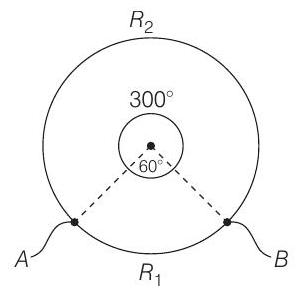Current Electricity 1 Question 4
4. A metal wire of resistance
(Main 2019, 9 April II)
(a)
(b)
(c)
(d)
Show Answer
Solution:
- Initial resistance of wire is
Then,
When wire is stretched twice its length, then its area becomes
So, after stretching, resistance of wire will be
Now, this wire is made into a circle and connected across two points

Now, above arrangement is a combination of two resistances in parallel,
Since,
So,






